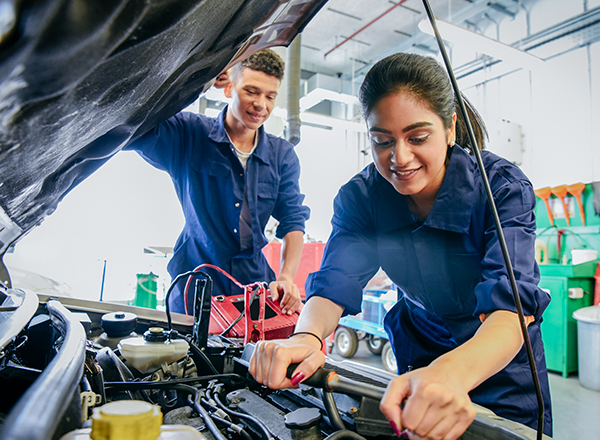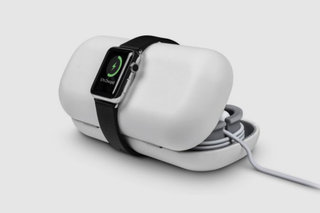
The latest Volvo news includes a plan to electrify its entire lineup by 2030. A sedan and an all electric crossover will be offered by the automaker. It's also working to develop a self driving SUV, and a mildly hybrid version for its XC40. These plans sound uncertain, but they offer promising developments that will keep Volvo customers happy for many years.
Volvo intends to electrify all of its vehicles by 2030
Volvo, a Swedish automaker, plans to transform its entire fleet into battery-powered vehicles by 2030 in a bold move. The switch was announced by Volvo last year and dealers have been informed about it. It will sell hybrids and electrified cars as a bridge towards fully electric cars. The company intends to eliminate all gas-powered vehicles from its fleet by 2030, which includes hybrids.

It is currently developing a self driving SUV
While the self-driving SUV trend continues to expand across the world, Volvo is not yet ready to introduce its own vehicle. While the company has announced its own electric SUV, it is still a ways away from achieving that goal. Automaker has been working with Zenseact to introduce autonomous driving technology in the U.S. and Europe. The Swedish automaker Ride Pilot has been tested in conjunction with Zenseact. It is also collecting data in Europe, the U.S., and other regions.
It is a brand-new electric crossover
Volvo is getting ready to launch a new hybrid electric crossover vehicle. The company has not confirmed the name or its intended performance specs, but the company did tease that the vehicle would be pure electric. Unlike some luxury automakers, such as Audi and BMW, Volvo does not design and build its own electric cars. Volvo will soon launch an all-electric version for its X3 crossover. This will combine electric power and a standard package. The car may increase sales for the luxury automaker.
It will offer a mild-hybrid model of its XC40
If you're looking for a new car, you should check out Volvo's lineup of electric vehicles. A traditional hybrid uses gas and electric power. A mild hybrid uses the best of both. A 48-volt system is formed by the internal combustion engine and an electric motor. It stores energy when it stops. This energy is then used by the vehicle to boost its power when the driver accelerates.

It is planning to add another SUV
Volvo appears to be developing another SUV. The Embla SUV will look like the Concept Recharge, Volvo’s manifesto for the next generation in all-electric cars. The Embla may even look similar to a Volvo wagon. The new vehicle will feature straight edges and sleek lines that resemble the wagon. It will likely come with an all electric powertrain and a modern touchscreen. It will also take inspiration from the current XC90 SUV.
FAQ
How do I fix my vehicle as a hobby?
Why not make it a hobby if you're interested in cars? You can learn to fix them, buy them parts, and even sell them. If you are looking for something more, it would be an excellent hobby.
It's difficult to make this a fulltime job. It takes a lot of dedication and hard work. It requires a lot investment.
So unless you have a good reason for wanting to get involved with cars, then it might be best to leave it alone.
Can I work as an auto mechanic without a degree? What about part-time study?
While a degree is not required, it does help. Employers prefer candidates who have completed a full degree. It shows that you've worked hard and are determined to succeed.
You can still study while working, however. Many universities permit students to take courses during the summer holidays, and then finish their studies in the fall. Others allow students to study part-time all year.
What is the job description for a mechanic in a car?
For car mechanics, there are three main areas for employment:
-
Automotive repair shops
-
Dealerships
-
Independent garages
Automotive repair shops
This is where most people first think of becoming a mechanic. It's the easiest way for most people to get started. You can either work at a shop owned by someone else or set up your own business.
If you plan to work in a shop, you must apply to join the union. Once accepted into the union you will be trained by the union.
Once the training is completed, you can start working.
Register with the government if you want to open your garage. After you register, you will be required to meet specific standards.
When you've registered, you'll be given a license to operate your garage.
Your license allows you to sell spare parts and make minor repairs. It will not allow you to repair major engine problems.
Apart from selling spare parts, customers will also expect you to provide guidance and advice.
Dealership jobs
Most dealerships employ mechanics who specialize in one area of the car. For instance, they may only be qualified to fix brakes or change tires.
However, dealerships may also employ general mechanics who are able to handle all aspects related to car repairs.
These positions often require applicants to undergo specific training before being allowed to work. This means employers can choose which candidates are best suited for their role.
Some dealerships recruit students right out of school. These graduates have no difficulty learning about cars because they already know the basics and principles of mechanical engineering.
Independent garages
Independent garages aren't associated with any particular dealership. They tend to be focused on high-quality service.
Independent garages have the ability to afford higher wages, as they aren’t associated with any one company. These jobs generally pay better than those at dealerships.
Independent garages don't necessarily make for better work environments. Many owners prefer to run their businesses themselves rather than delegate responsibility to employees.
It is possible to work long hours, but not have any control over the day.
Also, expect to make lower wages than if your job was at a dealership.
There are many jobs that can be switched between. You can switch jobs easily if you are interested in working at a dealership. Simply ask your employer if they would be open to hiring you as a mechanic.
Alternatively, if you'd like to work at an independent garage, then you could try applying directly to the owner of the garage.
It's not always easy to find a job. There are plenty of other factors that influence how much you earn.
For example, the type of vehicle you repair and whether you charge extra for labor.
What are the requirements for an automotive technician?
High school graduation or GED is required with excellent grades in English and math. Also, you must be able read and write. After passing a written test, you will need to complete a series of practical tests before you are allowed to begin working.
Does it matter where I go to college?
You're wrong. There's no difference between colleges regarding getting into the automotive industry. You will find that some schools offer better programs than others. If you are looking for something more specific, consider going to another school.
What is the distinction between a mechanic or an automotive technician?
These two jobs are very similar but not identical. The mechanic fixes cars while the technician maintains them.
A mechanic must have good manual dexterity and be able to perform simple tasks quickly. They must also be able to diagnose problems accurately and repair them effectively.
A technician in automotive is more technical than a mechanic. They should be able read blueprints and use tools like drills and wrenches.
They must also be able to carry out complex procedures safely. They need to be familiar with various types of engines and electrical system.
They must also be able to understand how various parts interact with each other.
A mechanic typically earns less than an automotive technician. But there are many opportunities for both jobs.
Statistics
- According to the BLS, total auto technician employment is expected to exceed 705,000 by 2030. (uti.edu)
- Apprentice mechanics earn significantly less hourly than mechanics who have completed training, with a median wage of approximately $14.50 an hour, according to PayScale. (jobhero.com)
- According to the BLS, the median annual salary for automotive service technicians and mechanics in the United States was $44,050 in May 2020. (uti.edu)
External Links
How To
How to properly diagnose your car for repair
You should first examine the symptoms your car is showing to determine if it requires repairs. Follow these steps to properly diagnose your vehicle.
-
Check engine lights. You should inspect the dashboard lights, such as the engine light indicator and the oil pressure gauge. Also, check the battery light indicator. If any of these indicators have been flashing continuously for several days it could mean that there is something wrong with your vehicle.
-
Inspect the tire treads. Tires can become worn and cause problems in handling and braking. It is also important to inspect the wheel treads. They should look clean and be smooth. The best way to do this is to remove the wheels and take them off. Use a flashlight to see how well the treads are worn.
-
Pay attention to the level of your brake fluid. It is important to keep track of how much brake fluid you have in your car. This helps ensure that your brakes operate properly. Low brake fluid levels can cause brake failure when you apply pressure.
-
Check the suspension system. Most vehicles have a suspension system that absorbs shocks and vibrations. It improves control and allows for smoother accelerations or decelerations. Your vehicle might feel wobbly, or shake uncontrollably if it has a bad suspension. Try putting some weight on your front or rear axle to determine if you have a suspension problem.
-
Examine the steering column. The steering column connects the steering wheel to all other components of the vehicle. Accidents often damage steering columns. Replace it if your steering column feels loose or unsteady.
-
Observe the exhaust pipes. Exhaust pipes help move gases from the combustion chamber to the atmosphere. If your exhaust pipe leaks or cracks, it will allow harmful fumes into your cabin. Additionally, your tailpipe should be fixed immediately if it is bent.
-
Take a look under your hood. Take a look underneath the hood to find any strange or unusual items. Your engine could be leaking fluids. Also, professional technicians should be called if you detect an unusual smell coming out of your engine compartment.
-
The air filter should be checked. The outside environment can collect dust and other debris in your vehicle's air filters. A dirty air filter causes your vehicle to run poorly. Replace your air filter regularly.
-
Verify the fan belt. Your vehicle's fan belt connects the engine to the transmission. If the fan belt is damaged, the engine won’t turn. It is very easy to replace your belt. All you need to replace the belt is a screwdriver with pliers.
-
The radiator hose and hoses should be checked. The radiator hose transports water from radiator to engine. If the hose becomes damaged or cracked, hot liquid can be emitted onto the engine. You only need a pair of needle-nose pliers and a small wire brush to repair the hose.
-
Check the windshield wipers. Windshield wipers use electricity to wipe away rain and snow. If they stop working they could leave streaks behind on your window glass. You can fix the problem by changing the washer fluid.
-
You should inspect the cables. The batteries provide power to the electrical systems within your car. Make sure you disconnect the negative cable before replacing batteries. Failure to do so can damage your alternator.
-
Make sure your headlights are working properly. Headlights help you see the road ahead. Bad visibility can be caused by headlights that don't work correctly. You can check the bulbs to make sure they aren't burned out.
-
Pay attention to the lights. If you approach other drivers at night, lights will warn them. If one doesn't work, it could distract you and lead to an accident.
-
Inspect your brakes. Brakes will reduce the speed of your car in case of an accident. If the brakes fail to work correctly, your car could lose control and collide with another vehicle.
-
Make sure to change the oil. Your engine will stay lubricated by the oil. It prevents metal parts from rusting too quickly. It is recommended to change the oil each month.